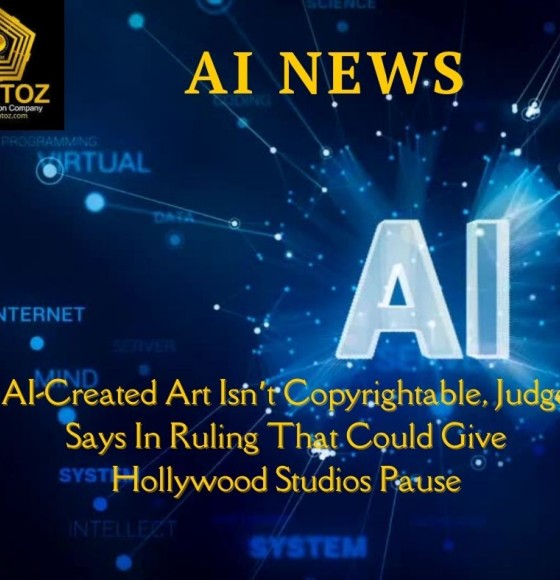The idea that studios would use generative artificial intelligence to totally generate scripts has become increasingly concerning more than 100 days into the writers strike. But copyrights are only issued to works created by humans, according to intellectual property law, and there are no signs that this will change any time soon.
On Friday, a federal judge upheld the U.S. Copyright Office’s conclusion that an AI-produced work of art is not eligible for protection. The decision was made in an order that rejected Stephen Thaler’s attempt to challenge the government’s stance against registering works created by AI. According to U.S. District Judge Beryl Howell, copyright law has “never gone so far” to “protect works generated by new forms of technology operating without any guiding human hand.”It was emphasized in the ruling that “Human authorship is a bedrock requirement.”
Thaler, the CEO of the neural network company Imagination Engines, has been in the forefront of the movement to preserve works produced by artificial intelligence. He claimed in 2018 that the Creativity Machine, an AI system, was the only author of a piece of art titled A Recent Entrance to Paradise, which was “autonomously created by a computer algorithm running on a machine.” Because “the nexus between the human mind and creative expression” is a key component of protection, the Copyright Office rejected the application.
Thaler filed a lawsuit challenging the refusal and the office’s criterion for human authorship, listing himself as the owner of the copyright under the work-for-hire theory. In his view, AI ought to be recognized “as an author where it otherwise meets authorship criteria,” with any ownership going to the owner of the machine. In his complaint, the complainant claimed that the office’s denial of his request was “arbitrary, capricious, an abuse of discretion, and not in accordance with the law” in violation of the Administrative Procedure Act, which allows for judicial review of agency decisions. The issue raised in the lawsuit was whether a piece of work created exclusively by a computer qualifies for copyright protection.
Howell stated, “In the absence of any human involvement in the development of the work, the response is the one given by the Register: No.
She emphasized that U.S. copyright law “protects only works of human creation” and is “designed to adapt with the times.” It has long been recognized that human creation is “at the core of copyrightability, even as that human creativity is channeled through new tools or into new media,” according to the decision.
She stated that although cameras provide a technical replication of a picture, this only occurs after a human creates a “mental conception” of the image, which is the result of decisions about the subject’s position, the composition, and the lighting, among other factors.
The fact that a new sort of work was within the purview of copyright, according to Howell, “was key to the conclusion that the new type of work fell within the bounds of copyright.”
The identical verdict has been obtained by numerous courts. The Supreme Court ruled in Burrow-Giles Lithographic Company v. Sarony, one of the key issues on copyright authorship, that there is “no doubt” that images are protected as long as “they are representative of original intellectual conceptions of the author. In another case, despite the lawsuit was rejected on other grounds, a federal appeals court ruled that a photograph taken by a monkey cannot be given a copyright since animals are not entitled to protection. The decision was mentioned by Howell in her decision. The order, which awarded summary judgment in favor of the copyright office, claimed that the plaintiff could provide no instances in which a court has recognized copyright in a work created by a non-human.
The judge also discussed the goal of copyright legislation, which, according to her, is to promote “human individuals’ engagement in” invention. She asserted that copyrights and patents were designed as “forms of property that the government was established to protect, and it was understood that recognizing exclusive rights in such property would further the public good by incentivizing individuals to create and invent.” The court further stated that “the act of human creation—and how to best encourage human individuals to engage in that creation, and thereby promote science and the useful arts—was thus central to American copyright from its very inception.” According to Howell, copyright law was not intended to apply to non-human actors.
The ruling was given while the legitimacy of AI businesses training their systems on copyrighted works is being debated in the courts. The lawsuits, brought by artists and artists in a federal court in California, charge copyright infringement and may force the companies to erase their extensive language models.
The copyright office stated that while most AI-generated works are not copyrightable in March, there are several circumstances in which AI-assisted products are entitled to protection. If a human “selected or arranged” a work produced with the aid of AI in such a “sufficiently creative way that the resulting work constitutes an original work of authorship,” it was said in the application, then the application might support a copyright claim.

















